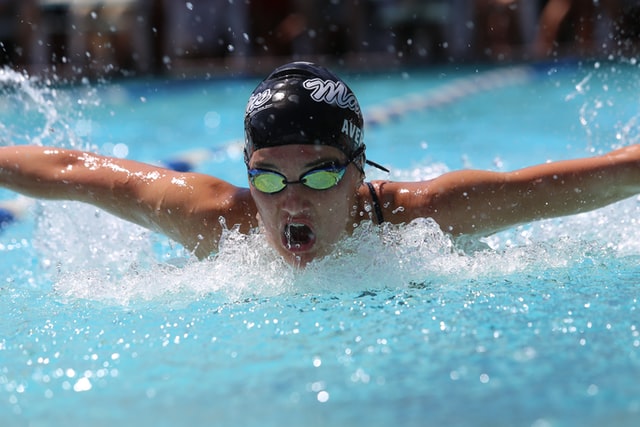Swimming Strokes Guide

Which of the Five Most Popular Swimming Strokes do You Use?
Learning to swim is a hugely important skill. While it is easiest to learn when you are young, it can be enjoyed at any age.
As part of the learning curve, it can be important to learn a range of different swimming strokes. Some can be more advantageous than others in certain situations and competitive swimming obviously focuses on different stokes.
Here’s a detailed look at five of the most popular swimming strokes. Once you find the perfect stroke for you, head to YouTube, where you will find guides showing the techniques in detail.
Breaststroke
The breaststroke is one of the most commonly taught swimming strokes. It uses a rhythmic action which employs the legs and arms at different points in the stroke – propelling you smoothly through the water. This is the slowest of the different swimming techniques and can be considered the most methodical.
You do the breaststroke with your stomach facing down in the water. You move your arms simultaneously in a semi-circular movement. Starting with the back of the palms together, before using your arms to push through the water.
At the same time as you move your arms, your legs perform a kicking motion. You bring your legs close to your body by bending at both the knees and hips – before they move outward. Your legs then come together again when fully stretched. There is much about the breaststroke that imitates the movement of a frog.
The breaststroke is a slower technique as most the leg and arm movement takes place under the water. The natural lift of the head in the breaststroke is when breathing takes place. As your technique improves, you will be able to complete a length of the pool with fewer, stronger strokes.

Swimming Strokes Guide: Crawl (or Freestyle)
The front crawl, in direct comparison to the breaststroke, is the fastest swimming style you can use. It is one that swimmers will naturally use when hitting the water.
To execute the stroke, you lie flat in the water with your stomach down and the main focus of the action is on the arms. You bring your arms out of the water alternately in a windmill-like motion. The power in this stroke comes from alternating arm pulls. While the arms provide that power, you’ll propel yourself with your legs with a flutter kick motion with pointed feet. Move your legs up and down alternately.
You’ll breathe during the breast stroke when your head naturally rolls to the side. You can just breathe on one side throughout your swim – or alternate from side to side. Whatever you are most comfortable with.
Advanced Swimmers: Butterfly
The butterfly is the most physically demanding of all of the swimming strokes. It provides an excellent cardio workout. This is the second fastest stroke behind the front crawl.
The butterfly is another stroke where your stomach is facing downward. You start by simultaneously bringing your arms over your head and then bringing them down into the water to propel you forward. Your legs have an undulating movement, much like the movement of a tail of a dolphin. When perfected, the whole body almost moves as one when using the butterfly stroke.
You can breathe either every stroke or every two strokes. You’ll breathe as the arms sweep upwards before the face is submerged and you’re ready to complete another stroke.

Flipping Over: The Backstroke
As the name implies, you’ll perform this stroke while lying on your back. It’s also the one stroke where you’ll be travelling backwards instead of forward.
To propel yourself you’ll use your arms in an alternating windmill like motion. Your arms start the motion by pushing underwater, which gives you that power. It’s important to keep your body as straight as possible when performing this stroke, with just a slight decline at the hips to keep your legs underwater. Those legs, like the front crawl, will engage in a flutter kick.
When doing the backstroke, your head is effectively out of water at all times, so you can breathe whenever you want. However, it is recommended that you breathe in rhythm with your strokes.
Doggy Paddle
The doggy paddle is the go-to natural approach that is used by young children the first time they ever hit the water. While not the most efficient style, it was the first ever swimming stroke used by ancient humans. The name comes from the similarities it has to a dog or a puppy swimming in the water.
To perform the doggy paddle, you move your arms forward and downwards alternately, then backwards, and upwards, using circular movements with your hands. At the same time, you keep your legs extended and perform a flutter kick. The natural propulsion of the arm movement will see your head life out of the water, while extending your chin forward can emphasise this movement and allow more time to breathe.
This technique can be good for short distances and is the natural stroke for any non-swimmers.
More Popular Pages for Aquatic Fitness: